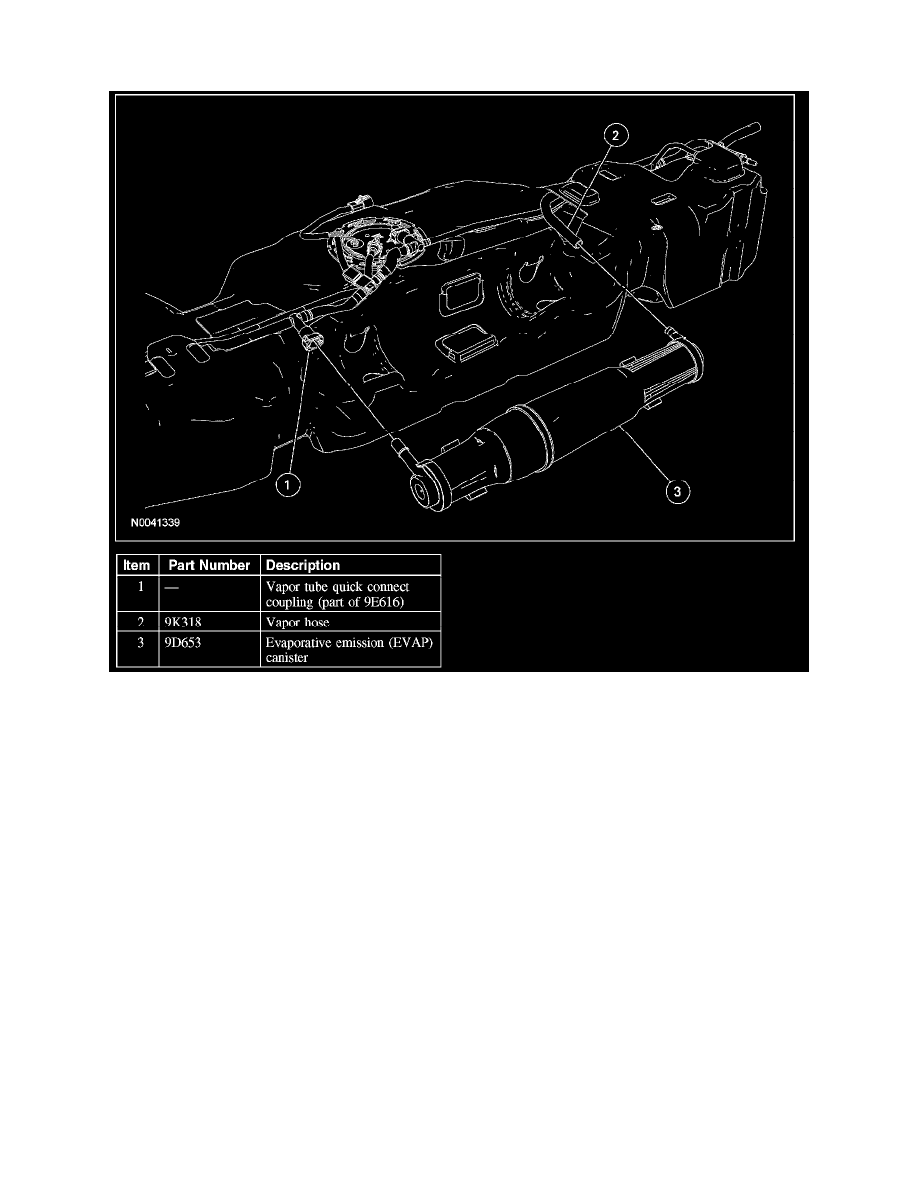Mountaineer AWD V6-4.0L (2008)

Evaporative Emission Control Canister: Service and Repair
EVAPORATIVE EMISSION CANISTER
Removal and Installation
WARNING:
-
When working on or near the evaporative emission (EVAP) system, disconnect the battery ground cable from the battery. The EVAP
system contains fuel vapor and condensed fuel vapor, so an electrical spark may cause a fire or explosion. Failure to follow this
instruction may result in serious personal injury.
-
Do not smoke, carry lighted tobacco or have an open flame of any type when working on or near any fuel-related component. Highly
flammable mixtures are always present and may be ignited. Failure to follow these instructions may result in serious personal injury.
NOTE: Use only water-based lubricants on the vapor hoses.
1. With the vehicle in NEUTRAL, position it on a hoist.
2. Disconnect the battery ground cable.
3. Remove the fuel tank.
4. Detach the evaporative emission (EVAP) canister from the fuel tank to gain access to the quick connect coupling.
5. Disconnect the fuel tank pressure (FTP) sensor and tube assembly quick connect coupling from the EVAP canister.
6. Disconnect the vapor hose from the EVAP canister.
7. Remove the EVAP canister.
8. To install, reverse the removal procedure.
-
Lubricate the vapor hoses with a water-based lubricant to ease installation.
9. Leak test the EVAP system. See: Testing and Inspection
10. Carry out the evaporative emission repair verification drive cycle.
